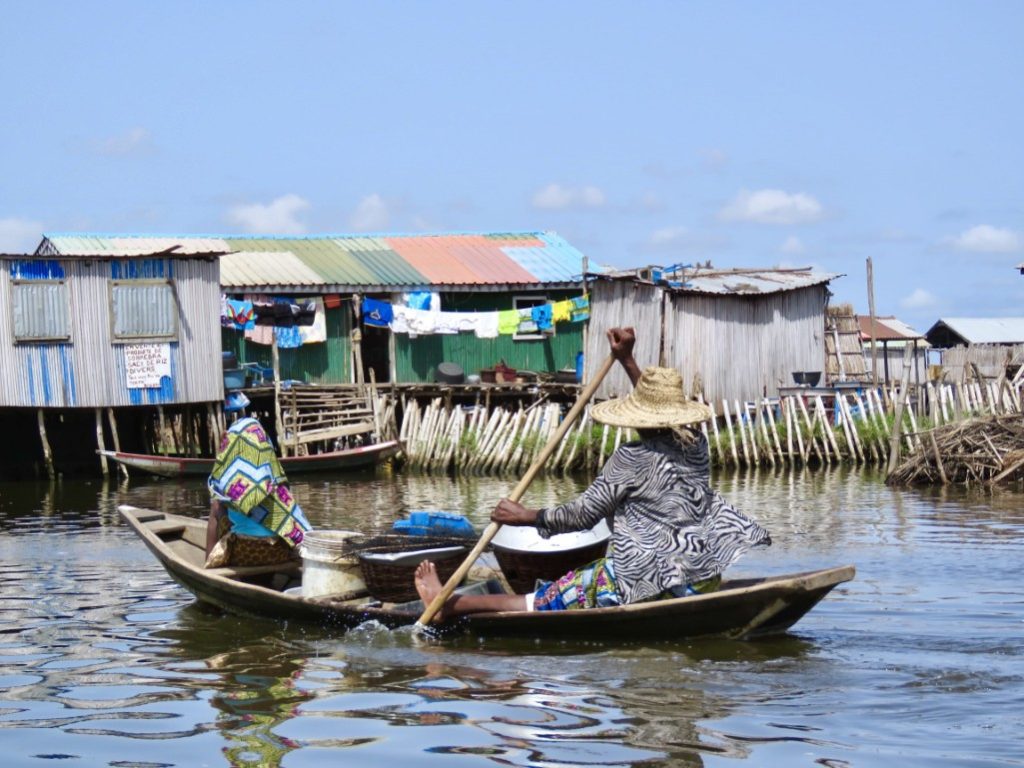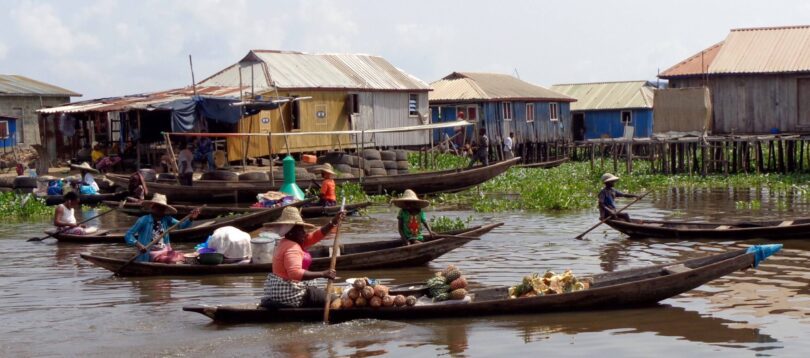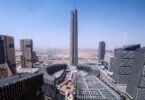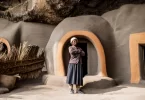Have you ever heard of the picturesque floating village of Ganvie village in the Republic of Benin? There are many floating villages worldwide, including those in Asia, and Venice in Italy. However, the Ganvié Lake Village in Benin Republic is unique because it is the largest floating village in Africa. Ganvié village is an extraordinary place home to many people, schools, and markets. The village represents the incredible length of human creativity.
The houses have great designs and remain intact because they get support from the stilts that raise them above the water and hold them in the bottoms of the water. Follow on to discover the extraordinary history of an African floating village.
Who are the People Living in Ganvie?

The floating city in Benin, Ganvie. It’s the biggest floating settlement in Africa. Photo/197 Travel Stamps
The people living in Ganvie, are the Tofinu people. This tribe relies heavily on fishing for their livelihoods and has developed a deep understanding of the surrounding ecosystem. Despite facing challenges such as pollution and overfishing, the people of Ganvie remain resilient and proud of their heritage. As a result of the peculiar nature of Ganvie Lake village, the ethnic Tofinu people are also described as “The Water People of Benin.” The question, however, is why did Tofinu people of Ganvie chose to live in the water houses instead of the land?
What is the Story of the Floating Village of Ganvie?

The floating village in Benin. Photo/Conde Nast Traveler.
The floating village of Ganvie has a fascinating history. West Africa, built over a lake is the largest floating village in Africa. Imagine that! It’s not an island but a unique community that contains everything in a typical village, such as houses, people, schools, and more. It’s a remarkable sight, and visiting Ganvie is an unforgettable experience.
The village was built 400 years ago in the era of slavery, right in the middle of Lake Nokoué. Legend has it that in the 18th century, the indigenous ethnic group of Tofinu built Ganvie, as a tactic to hide away from the Fon tribe- their oppressors. The people of the Fon tribe in the old Dahomey Kingdom were powerful and oppressive. The Fon people used their superiority to kidnap, brutalise, and sell other tribes to slave merchants. Dahomey kingdoms’ soldiers would capture and sell them to Portuguese traders.
The mighty warriors of the Fon tribe, however, had a major weakness – they believed that a sacred demon occupied Lake Nokoué. This belief prevented them from entering the river or coming close to the Ganvié Lake. The Tofinu were clever enough to see through this and take advantage of the situation. They quickly built homes for their people on this hallowed lake – this action was a great plan. This unique approach allowed them to escape the oppression of the soldiers and thrive in their new floating village. Following this, the Tofinu people named the village ‘Ganvié’ – which translates to “We are saved”. Today, 400 years later, the village still stands. Ganvié now has over three thousand buildings, including a Post office, a school, a bank and even a hotel.
Can You Visit Ganvie?
Yes, it is possible to visit the floating village of Ganvie which is popular for its status as Africa’s largest floating village. The village is accessible by boat and offers a unique experience for visitors who want to learn about the culture and way of life of the people of Ganvie. If you plan to visit Ganvie, arrange a guided tour with a local tour operator who can help you navigate the village and learn more about its history and traditions.








